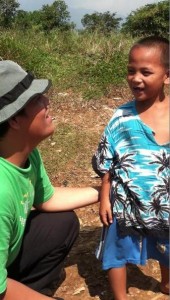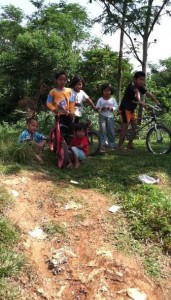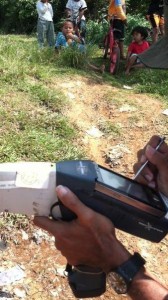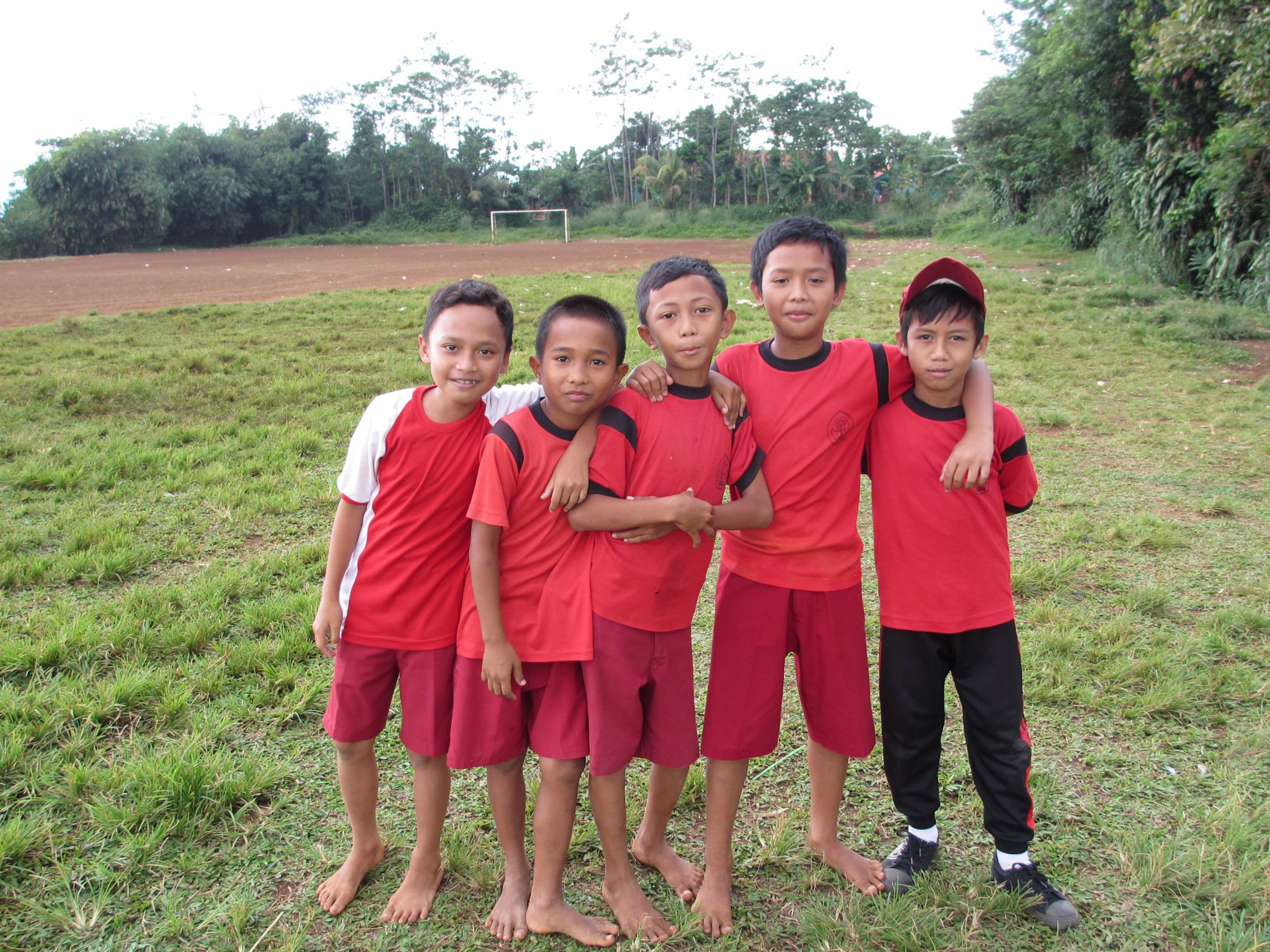


Aug, 2013.
Pure Earth is launching the cleanup of a lead-contaminated soccer field in Cinangka, Indonesia, so that children in the village can play without being poisoned.
The project, starting this month, is being undertaken with GAHP’s help in collaboration with the Indonesian Ministry of Environment, the government of Bogor Regency, and the NGO Komite Penghapusan Bensin Bertimbel.
Author Damon DiMarco visited Cinangka with Pure Earth. This is what he saw. (Watch Video below)
—-
A suburb of Jakarta, the village of Cinangka sits on a mountaintop in west central Java. Despite its cheerful inhabitants, brightly-colored houses, and blissful weather, this is one of the most polluted places in Indonesia.
Alfred Sitorous (pictured in green) works for Pure Earth’s lead abatement subcontractor in Indonesia. He travels throughout Jakarta’s far-flung city limits to visit areas affected by lead contamination. In the photo above, Alfred talks to local children playing in the village’s lead-contaminated soccer field. He points to their feet and chides them for for not wearing shoes. The kids love running around barefoot but they don’t realize this can be dangerous. In some portions of the soccer patch, the ground they’re playing on registers over 100,000 parts per million of lead. The World Health Organization warns that soil containing more than 400 parts per million of lead can be hazardous to human health.

many kids play barefoot, making them more vulnerable to lead poisoning. They are also likely to trek the lead on the feet back to their homes.
Alfred is great with kids. He’s practically a big kid himself. He’ll drop to one knee and make barnyard noises — cows and chickens, pigs and cats – to call local children into a big circle and make them giggle. He’ll lead them in songs and little dances before playing a seemingly impromptu game of Who Can Put Shoes on the Fastest?
Squealing with delight, several barefoot children scamper off to retrieve the sandals they’ve kicked into ankle-high grass. Dropping to their rumps, they pull on their shoes while Alfred starts a Name Game with the remaining kids.
Alfred is clever. He didn’t choose the Name Game by accident, he did it to make a mental roster of kids who aren’t wearing shoes. He’ll take this list back to local officials who can then speak to the children’s parents, to remind them that in Cinangka, children must wear shoes if they want to grow up healthy.
Not long ago, illegal lead smelting formed the backbone of Cinangka’s economy. Between 1983 and 2006, no less than 32 illegal smelter choked the town with black toxic clouds. The atmosphere became so lethal that guavas growing from local trees turned the color of chocolate. Birth defects became common in the local populace, with many children showing signs of mild to severe developmental problems.
In the photo, a Pure Earth associate is testing the soil in the soccer patch with a handheld X-ray Fluorescence spectrometer. The small white/gray squares seen in the foreground of this photo are battery separators half-buried in the rise on which the children stand.
Lead-acid batteries make use of materials like rubber, cellulose, glass fiber mat, and polyethylene plastic to insulate positive and negative electrodes. Cut into squares, these separators get sandwiched between the lead plates to keep them from touching each other and shorting out. Over the course of a battery’s life, the separators become saturated with sulfuric acid, lead residue, and other chemical by-products. They can be just as toxic to human beings and the environment as the lead components themselves. Sometimes worse.
This entire playground is nothing but a crude landfill for millions and millions of separators. These children cannot fathom the danger they’re in.
The readings from the spectrometer are dangerously high. These children are standing on soil that registers 49,239 parts per million of lead – more than 123 times the internationally recognized health standard established by the World Health Organization. This patch of ground also registers arsenic at 1,744 parts per million.
Related: Pollution cleanup gets serious in Indonesia



